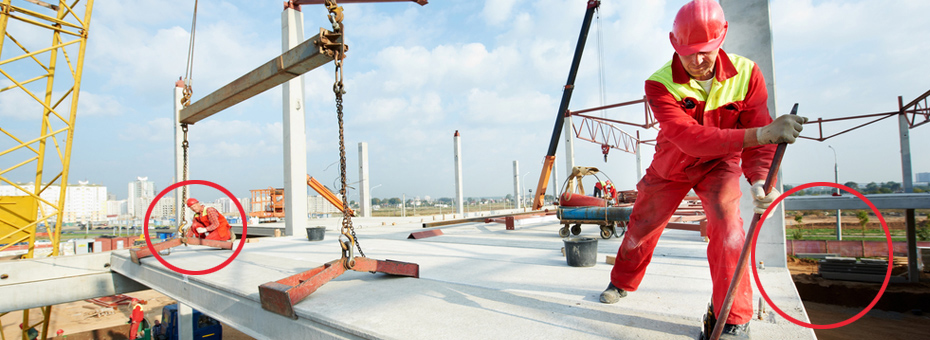The photograph below, originally placed above Nick Masci’s Article on April 30th (by the LEI team, not Masci) seems to show an unsafe act.

I let LEI know this and the photo has since been changed.
Let’s take a look at the original photo for a moment though and think about what it tells us. The worker on the right appears to be working at height, close to an unprotected edge, and there is no sign that he has any form of fall restraint. Falls from height is one of the largest categories of death and injury on construction sites in the US and around the world. Is the worker on the right protected and, if so, how? This is a stock photo and we don’t know the answer. We can assume he’s not protected. I would expect both workers to be wearing a full harness and be clipped on.
Why should members in other industry sectors care? In addition to saving the lives of workers, because we all buy construction services. What happens on your sites and in your plants – even if your company is not directly involved – affects the reputation and performance of your company.
Using lean thinking to improve construction reduces work-related accidents and incidents just as it does in manufacturing, healthcare, and elsewhere. Studies in Denmark and in Chile show 65% and 75% fewer accidents on lean managed sites than on comparable sites in the same company. Anecdotal evidence from lean constructors in the US and elsewhere in the world supports this.
Additional Benefits and Considerations for Lean Thinking to Construction
As construction is an example of project-based production, there are differences from Lean applied to “series production” as in manufacturing, healthcare, or other, more repetitive administrative processes. When lean thinking starts in the design phase with constructors working alongside architects and engineers, it is easier to improve the overall construction process and construction safety. This requires owners/clients to buy their construction in a different and collaborative way – no more adversarial “Design-Bid-Build.”
All over the world more than half of all projects are delivered late despite the widespread use of CPM (critical path methods). This may seem counterintuitive until you realize that CPM was not designed for managing construction projects. To manage construction projects effectively requires a planning system that is flexible, short-term, and gives early indication that things might go wrong so that remedial action can be taken.
One tool among many developed specifically for managing production in project-based environments like construction is a short term planning system called the Last Planner® System (LPS) developed by Glenn Ballard and Greg Howell. LPS creates reliable production. It adds steps that are missing in the CPM system – ensuring that work can be done before it is put into production and systematically learning from late delivery of promised work so that the process improves during the project. Your company can also choose to actively pull lean construction from your suppliers. (You can start by requesting that they use the Last Planner® System or something similar for project planning and programming).
In addition to increased safety, there is growing evidence that lean thinking applied to construction also reduces project duration while bringing the cost of projects down and helping your supply chain make more money. An all around win. This is why major owners/clients like Alstom, Google, UHS, Intel, Disney, Merck, Amgen, General Motors, Microsoft, a number of universities and others in the public sector are already pulling lean construction from their construction supply chains.
Safety is something we are all responsible for. Safety for ourselves and safety of others. Walking by is not acceptable, even if it is a photograph.
If you think something is or might become unsafe – ask a question to check that the operation has been properly thought through and designed. If it hasn’t, stop the operation and request that it only be resumed once a safe operating procedure has been agreed and understood by the worker(s).
Resources
Find out more about creating safer work environments in construction at your local lean construction community of practice. In North America, visit leanconstruction.org.





